
The Doberman Pinscher is a combination of power and grace, because of its proud, well-proportioned chest area, and well-toned neck. This breed comes in a variety of colors, namely black, blue-gray, black and tan, fawn, red, and white. Some breeds may have white markings, which are considered a no-no in several dog clubs. Traditionally, the Doberman Pinscher’s ears are cut off when it reaches 12 weeks, but nowadays, and especially because the cutting off of their ears is now against the law, breeders now choose to leave the ears to grow naturally. When they do, a Doberman Pinscher’s ears resemble that of a hound. This breed’s hair is very short, yet thick, and clings closely to its body.
Life Expectancy:
10-13 years
Energy Level:
Average.
Living Conditions:
Should have a yard. Sensitive to cold climates.
Barking:
Higher than average.
Exercise Needs:
Daily 40 minute walk.
Breed Group:
Working
Size:
Large
Height:
24-28 inches
Weight:
65-90 pounds
Standard Hair Colors:
Black, Black and Tan, Blue Gray, Red, Fawn, White.
National breed club:
Doberman Pinscher Club of America
In terms of history, the Doberman is a very young breed. It is believed to be a hybrid of German Pinschers, Pinschers, Greyhounds, Rottweilers, Beauceron, and English Greyhound, a process that was undertaken in Germany during the 1860s. The dog got its name from the German Louis Dobermann, who took over the mixing project. Dobermann was inspired to create a reliable bodyguard-slash-guard dog because he goes through bandit-infested areas often.
This breed was made to be a guard dog. In fact, it was trained for a century to become the exceptional guard dog that it is today. Because of this, the Doberman Pinscher’s strength and stamina are peerless. They are also very intelligent, which makes them easy to train. They make for perfect guard dogs in that they are very assertive, yet not vicious, and are rarely harmful to their families or owners as they are very loyal dogs. Just make sure that you let them know who’s boss, because Dobermans tend to push you around when you let them. It can also be very protective of its owners, so make sure that you let it socialize with other dogs to avoid over protectiveness.
Since it is a very dynamic and prolific breed, Dobermans need thorough exercise daily.
While apartment-dwellers can keep a Doberman, it is more ideal for this breed to have a yard to run in. It is also helpful to note that Dobes are very sensitive to cold climates, so it cannot stay outside at night for very long periods.
XXXXXXXX
Though often healthy, there are several illnesses that can develop in Dobermans. Because of the fusion of its neck vertebrae and the compression of its spine, Dobermans are prone to cervical spondylitis, also known as wobbler syndrome. Some cases of Von Willebrands disease, a blood disorder, have been cited as well. Other disorders common in this breed are obesity when reaching middle age, hip dysplasia, and congenital heart problems.
...you may also like the Aussie Bulldog. Like the Doberman, it makes for
a dependable watchdog, and is safe even when around children. This breed is
a loyal and intelligent dog.
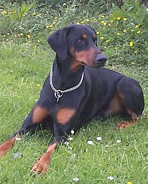
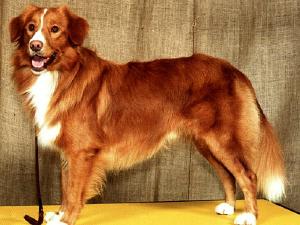 Nova Scotia Duck Tolling Retriever
Nova Scotia Du
Nova Scotia Duck Tolling Retriever
Nova Scotia Du
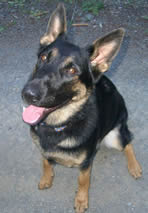 German Shepherd Dogs: A guide to dogs and puppies of the German Shepherd Dog breed
The German Shepherd Dog!
The German Shepherd Dog, who also
German Shepherd Dogs: A guide to dogs and puppies of the German Shepherd Dog breed
The German Shepherd Dog!
The German Shepherd Dog, who also
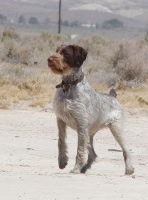 German Wirehaired Pointers: A guide to dogs and puppies of the German Wirehaired Pointer breed
The German Wirehaired Pointer!
The most striking characteri
German Wirehaired Pointers: A guide to dogs and puppies of the German Wirehaired Pointer breed
The German Wirehaired Pointer!
The most striking characteri
 Beagle
Beagle
Beagle
Beagle
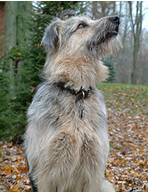 Scottish Deerhounds: A guide to dogs and puppies of the Scottish Deerhound breed
The Scottish Deerhound!
The Scottish Deerhound is comparabl
Scottish Deerhounds: A guide to dogs and puppies of the Scottish Deerhound breed
The Scottish Deerhound!
The Scottish Deerhound is comparabl
Copyright © 2005-2016 Pet Information All Rights Reserved
Contact us: www162date@outlook.com